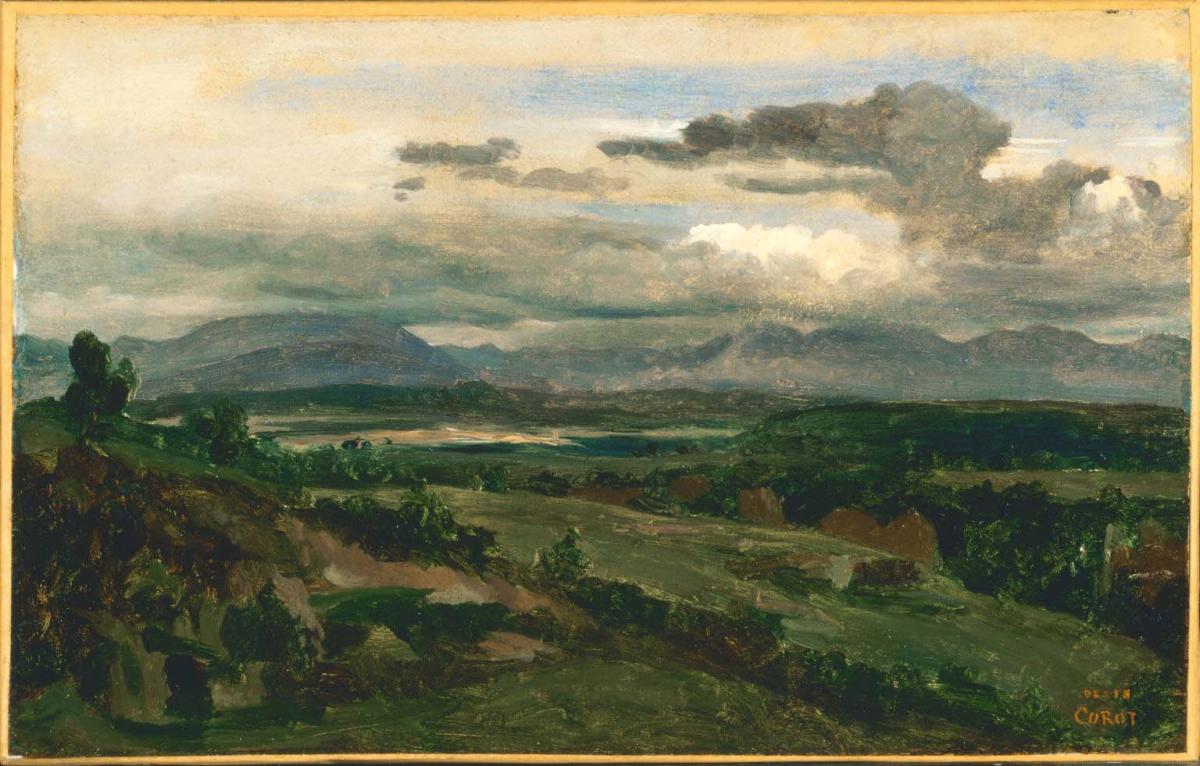Civita Castellana
Jean-Baptiste-Camille Corot ( late 1860s )

On May 10, 1826, Corot left Rome for Civita Castellana and remained there for most of June. He returned the following year, working in the area during September and October 1827. Corot enjoyed painting the ancient ruins that had been left to decay from time and weather, and Civita Castellana provided harmonious setting of landscape and architecture.
In this painting, Corot avoided the city’s architectural monuments in order to survey the surrounding terrain, with a view of the Sabine Mountains to the east. He adopted a viewpoint near the convent of Santa Chiara, depicting in the foreground a rocky embankment to the left and a grassy mound to the right. Additional details are subordinated by soft, broad brushstrokes that invite the eye to traverse the expansive olive-green and brown plain leading to the mountains in the distance. The massing of clouds on the right counters the rocks in the foreground. The work feels spontaneous, almost unfinished in Corot’s rendering of the paint, displaying his talent for rendering his immediate impressions of nature. This commitment to visual experience is reflected in his interest in capturing differential lighting and subtle distinctions of atmosphere.